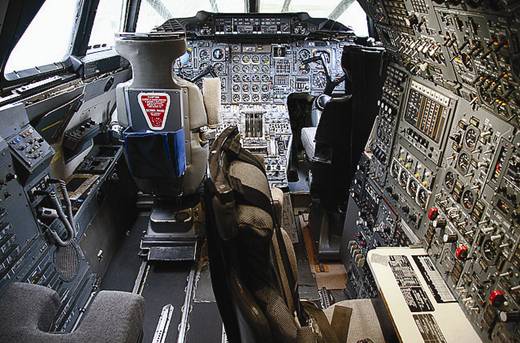 BAC / Aérospatiale Concorde
BAC / Aérospatiale Concorde
When an experienced airline pilot moves from one type of aircraft to another they must, of course, be trained to fly the new aircraft type and this is called a Conversion Course. The course to train a pilot onto a modern aircraft type, such as the Boeing 777, is very involved and can take up to 8 weeks. The 777 Conversion Course will start with 8 days of Groundschool, where the pilot will learn all the aircraft systems and characteristics, and will also include 4 formal exams. Following this will be a minimum of 8 four-hour sessions in the Simulator, after which the trainee will fly 4 supervised return flights (called “Line Training”) which will contain a minimum of 8 separate sectors. After this, the trainee will undergo an additional normal scheduled flight called the Final Line Check, after which he or she will be certified to operate that type of aircraft unsupervised.
Concorde was a little bit different. From start to finish the course could last 28 weeks, not 8. Although it was a very advanced aircraft it had very little of the electronic cockpit displays seen in modern types. Also, of course, it was a three-crew aircraft, unlike the modern two pilot aircraft (the aircraft manufacturers replaced the traditional Flight Engineer with computers and a crew toilet!). The Groundschool element took place at the British Aerospace training establishment at Filton airfield, near Bristol and was a minimum of 6 full weeks (or 7 for the Flight Engineer) where you learn not only everything about the aircraft systems, but also something that you had probably never experienced in your aviation career to date - supersonic flight. During this phase you also take many formal exams, a requirement of the Civil Aviation Authority. At some point we spent about a week being trained in Safety Equipment and Procedures (First Aid & Medical, Security training, Pressure Breathing etc). This phase also included a  minimum of 30 hours training in the Simulator used as a static cockpit, becoming familiar with the Flight Deck layout, position of switches and controls, as well as learning some of the checklists. From here we then moved on to the Simulator phase of the training where we operated the Simulator as we would a real aircraft, with full motion and outside visuals i.e. as realistic as possible. For this phase there was a minimum of 19 sessions, each lasting 4 hours, for a total of 76 hours Simulator Training (compared with 32 hours for a modern Boeing 777). This was the most gruelling part of the course, and the most nerve-wracking.
minimum of 30 hours training in the Simulator used as a static cockpit, becoming familiar with the Flight Deck layout, position of switches and controls, as well as learning some of the checklists. From here we then moved on to the Simulator phase of the training where we operated the Simulator as we would a real aircraft, with full motion and outside visuals i.e. as realistic as possible. For this phase there was a minimum of 19 sessions, each lasting 4 hours, for a total of 76 hours Simulator Training (compared with 32 hours for a modern Boeing 777). This was the most gruelling part of the course, and the most nerve-wracking.
Following successful training in the Simulator we then took a Concorde aircraft to a little-used airfield to carry out Base Training, where we flew the aircraft for real, but without passengers. Most of the flying involved what is called Circuit Work, where we would take-off, fly a circuit round the airfield, and then land - but without stopping on the runway, as we would normally do on a regular flight. Instead, after touchdown we would then apply power and continue down the runway to take off again. The airfields we used for this Base Flying were places like Brize Norton, Chateauroux in France, Prestwick in Scotland, or Shannon in the Republic of Ireland. After Base Training we moved on to Line Training, where we operated the aircraft on real passenger flights, but supervised, of course. This period might last for 2 months before we were checked for the last time on the course and pronounced capable of operating the aircraft unsupervised. We were now Concorde Flight Crew.

